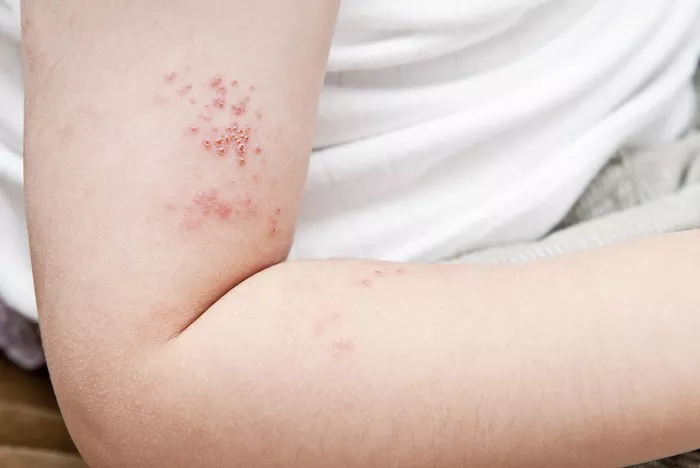Ringworm, despite its name, is not caused by a worm. It is a common fungal infection that affects the skin, hair, and nails. The medical term for ringworm is tinea, and it can appear on various parts of the body, including the scalp, feet, groin, and skin. Understanding how to treat ringworm effectively and how quickly it can resolve is crucial for anyone affected by this condition.
What is Ringworm?
Ringworm is a fungal infection caused by dermatophytes, a group of fungi that thrive on keratin, a protein found in skin, hair, and nails. Ringworm presents as a circular, red, itchy rash with raised edges, often clearing in the center, which gives it a ring-like appearance. It is highly contagious and can spread through direct contact with an infected person or animal, or by touching contaminated surfaces or items.
Symptoms of Ringworm
The symptoms of ringworm can vary depending on the area affected:
Scalp (Tinea Capitis): Hair loss, itchy scalp, and red patches.
Body (Tinea Corporis): Red, scaly patches that may itch.
Feet (Tinea Pedis or Athlete’s Foot): Itchy, burning, and peeling skin between the toes.
Groin (Tinea Cruris or Jock Itch): Itching and redness in the groin area.
Diagnosis
A healthcare provider can usually diagnose ringworm by examining the affected area. Sometimes, they may perform a skin scraping to confirm the presence of fungal elements under a microscope.
Treatment Options for Ringworm
Treating ringworm involves antifungal medications that can come in different forms. The choice of treatment depends on the severity and location of the infection.
Topical Antifungals
For mild cases, over-the-counter topical antifungals are often effective. Common options include:
Clotrimazole: Cream or solution applied twice daily.
Miconazole: Available as a cream or powder.
Terbinafine: A cream or gel applied once or twice daily.
These treatments are typically used for 2 to 4 weeks, depending on the severity of the infection.
Oral Antifungals
For more severe or extensive cases, especially those affecting the scalp or nails, oral antifungals may be necessary. Commonly prescribed medications include:
Griseofulvin: Taken for several weeks, often 6 to 12 weeks for scalp infections.
Terbinafine: Usually prescribed for a shorter duration, around 2 to 4 weeks.
Itraconazole: Effective for various fungal infections.
Duration of Treatment
The duration of treatment can significantly impact how quickly ringworm resolves. Generally:
Topical Treatments: Improvement is often seen within 1 to 2 weeks, but it’s crucial to complete the full course to prevent recurrence.
Oral Treatments: Improvement can take longer, usually 2 to 4 weeks for skin infections and 6 to 12 weeks for scalp or nail infections.
How Fast Does Ringworm Go Away?
The speed at which ringworm clears up with treatment depends on several factors:
Type of Treatment
Topical Treatment:
- Typically effective within 1 to 2 weeks for mild cases.
- Complete resolution may take longer, up to 4 weeks, depending on adherence to treatment and the severity of the infection.
Oral Treatment:
- Oral antifungals can show improvement in 1 to 2 weeks, but complete resolution may take longer, particularly for scalp infections (6 to 12 weeks).
Severity of Infection
Mild Cases: These may resolve faster with topical treatments.
Severe Cases: More extensive infections, especially those involving the scalp or nails, may take longer and require oral antifungals.
Individual Factors
Individual responses to treatment can vary. Factors that may influence the speed of recovery include:
Immune System Health: A stronger immune system can help clear infections faster.
Underlying Health Conditions: Conditions like diabetes or those that weaken the immune system can prolong recovery.
Adherence to Treatment: Following the prescribed treatment regimen is crucial for effective recovery.
Preventing Recurrence
Once treated, it’s essential to take steps to prevent ringworm from returning. Here are some preventive measures:
Maintain Good Hygiene
- Wash your hands regularly, especially after touching animals or soil.
- Keep skin clean and dry, particularly in warm, humid conditions.
Avoid Sharing Personal Items
- Do not share towels, clothing, or hairbrushes.
- Use your own gym equipment and avoid communal areas if possible.
Treat Infected Pets
- Pets can carry ringworm. If your pet shows signs of infection, consult a veterinarian for appropriate treatment.
Regularly Clean Shared Spaces
- Regularly clean and disinfect shared spaces, especially locker rooms, swimming pools, and showers.
When to See a Doctor
If you suspect you have ringworm or if over-the-counter treatments do not improve your condition after 2 weeks, consult a healthcare provider. You should also see a doctor if:
- The infection spreads or worsens.
- You experience severe itching or pain.
- There are signs of a secondary bacterial infection, such as increased redness, swelling, or pus.
Conclusion
Ringworm can be an uncomfortable and persistent condition, but with appropriate treatment, it can resolve effectively. Topical antifungals typically provide relief within a week or two, while oral treatments may take longer, especially for more severe infections.
By understanding the nature of ringworm, recognizing the symptoms, and adhering to treatment protocols, you can effectively manage and eliminate this fungal infection. Remember, maintaining good hygiene practices and taking preventive measures can help keep ringworm at bay. If you have concerns about persistent or severe symptoms, always consult a healthcare professional for advice tailored to your situation.
Related topics:
























